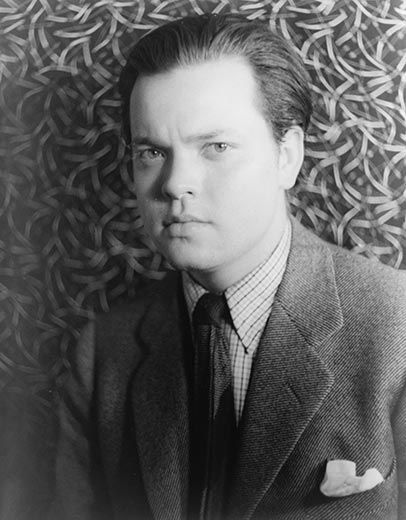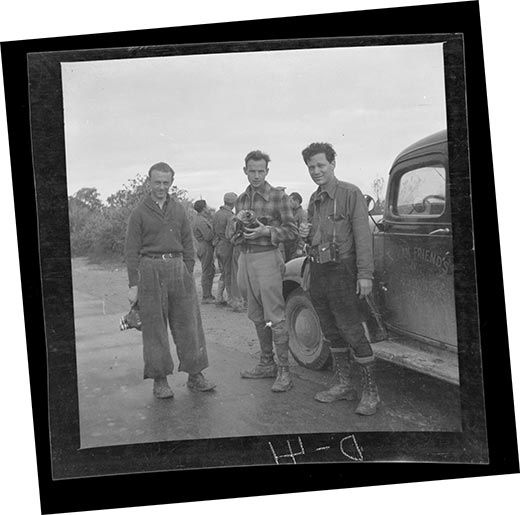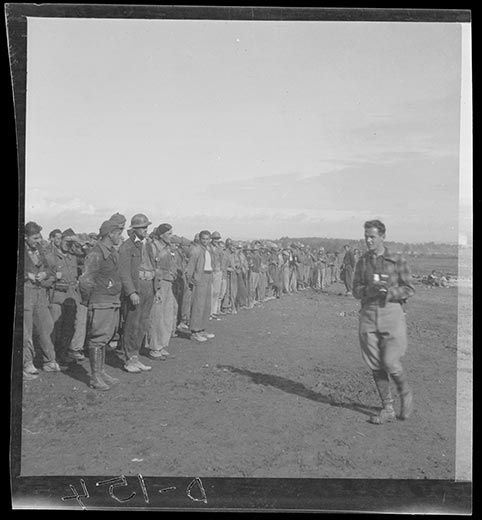Orphan Films - Recapturing Lost Snippets of History
Buffs gather from around the world to watch newly uncovered films by the likes of Orson Welles, Henri Cartier-Bresson and others
/https://tf-cmsv2-smithsonianmag-media.s3.amazonaws.com/filer/orphan-films-631.jpg)
They call themselves “orphanistas”: archivists, historians, students, filmmakers and film buffs who assemble every two years to view what they call orphan films. Shorts, cartoons, newsreels, travelogues, sponsored films, stock footage, advertising, propaganda, home movies, all parts of our cultural heritage that are potentially at risk because they have no owner – abandoned to disintegrate over time.
This year’s symposium, held in New York City, featured films from 17 countries and included: a 1903 Objiwe performance of Hiawatha, home movies of Mahatma Gandhi, the only known visual record of refugee camps established after the Japanese invasion of Shanghai in 1937, the Velvet Underground rehearsing in 1965 and clandestine footage of the Soviet invasion of Prague in 1968. These are the outcasts of the film medium, “sleeping beauties” as Paula Félix-Didier calls them. As director of Museo del Cine in Buenos Aires, she helped to save a print of Fritz Lang’s Metropolis with some 20 minutes of extra footage that hadn’t been seen in decades. (This restored Metropolis is currently touring the United States.)
Perhaps the most exciting discovery at this year’s meeting was With the Abraham Lincoln Brigade in Spain, a fund-raising film made by photographer Henri Cartier-Bresson (assisted by Herbert Kline). During the Spanish Civil War, 35,000 volunteers from some 50 nations joined the Republic in its fight against General Franco. These volunteers included the Abraham Lincoln Brigade, a small unit of 3,000 Americans. Cartier-Bresson had been working on a documentary about treating wounded Republic soldiers when he was asked to go to the front to make a film that would be shown to the Friends of the Abraham Lincoln Brigade back in the United States.
As a fundraiser, the film was designed to highlight the impact of previous donations: food, showers, medical supplies. But its real purpose was to get money to the Americans trapped behind the Spanish border. It cost $125 to bring back one American from Europe, so Cartier-Bresson made sure to film as many individuals as possible so viewers back home would donate to the cause.
With the Abraham Lincoln Brigade is not high art, but it is a passionate film that complements Cartier-Bresson’s other work. It shows his commitment both to leftist causes and to photojournalism, the source of much of his later fame. For years it had been hiding in plain sight in the Abraham Lincoln Brigade Archives, viewable on a poor-quality 16mm print that had been transferred to videotape around 1995. Art historian Juan Salas saw an unlabeled copy while researching American photographers in the Spanish Civil War. Using newspapers, photographs, autobiographies and diaries, he was not only able to pinpoint the shooting location and dates—October 28, 1937, near Quinto, a town outside Zaragoza in northeast Spain—but place Cartier-Bresson there conclusively.
During his research, Salas made another intriguing discovery. Given access to the “Capa suitcase,” a valise filled with the negatives of photographer Robert Capa that only recently emerged after being presumed lost for decades, Salas connected one of Capa’s exposures to a brief shot in the closing credits of With the Abraham Lincoln Brigade. Salas even found a photograph of Capa’s motion picture camera set to film the scene, revealing a cooperative effort between the two visionaries.
“You have to be very strategic about what you preserve,” Salas said, pointing out that the original 35mm print of With the Abraham Lincoln Brigade is still missing. The more the film is screened, the better the chances that additional material might be found.
__________________________
Another rare period film—one that documented racial injustice on American soil—also screened at the New York symposium. In 1940, the Rockefeller Foundation’s General Education Board hired Felix Greene, a cousin of novelist Graham Greene, to produce a 26-minute upbeat documentary about education possibilities for African-Americans to mark the 75th anniversary of emancipation. Greene sent film crews under cinematographer Roger Barlow throughout the Southeast. At one point Barlow and two crew members were arrested in Memphis as suspected Communists; explaining that they were actually working for the Rockefellers didn’t help their cause much.
One Tenth of Our Nation was scheduled to premiere at the American Negro Exposition in Chicago on October 21, 1940 to mark the 75th anniversary of emancipation, but members of the General Education Board were dismayed when they saw the finished movie. They demanded changes to spotlight advances in black education, but the conclusions reached in the second version of the film remained harsh and inescapable: poverty, poor facilities, lower standards—bluntly, institutional racism—were holding blacks back. A voice-over advising that black schoolchildren should have four servings of milk daily and eat lots of fresh vegetables seemed to the board to be not just ironic but cruel juxtaposed with Barlow’s images of fly-specked lunch tables and raisins doled out for meals.
According to Craig Kridel, an educational historian at the University of South Carolina and one of the discoverers of the film, the board asserted that Greene "had no historical perspective of race relations in the U.S. or of the social and economic problems of the South.” In 1943, the board prepared a third version of One Tenth of Our Nation, some seven minutes shorter and with new material meant to encourage both students and the public about the potential for educating blacks. And then the film seemed to disappear, until it was recently rediscovered at the Rockefeller Archive Center by Kridel and curator Carol Radovich.
Kridel and Julie Hubbert, also at the University of South Carolina, are continuing research into how the film was made and why such a valuable, provocative work vanished.
“As the first documentary on black education in America, One Tenth of Our Nation displays the problems of attempting to present to a general audience the pride of accomplishment alongside reprehensible inequities of black education,” Kridel explains. “Now that historians are beginning to examine ‘the long civil rights movement,’ this rare period film offers a troubling and poignant portrayal of how social injustices were understood and accepted in the United States.”
Unlike most documentaries of the time—upbeat films that tried to reassure viewers about society's problems—One Tenth of Our Nation offered a very sobering look at issues that had largely been ignored. It would take more than a decade for the Supreme Court to strike down "separate but equal" segregation with Brown v. Board of Education.
__________________________
For many the highlight of the orphan film conference was a look at “Orson Welles’ Sketch Book,” six 50-minute episodes the actor-director made for BBC television in 1955. Welles was in the process of trying to complete Mr. Arkadin, a troubled multinational production, and staging his Moby Dick Rehearsed in London. He accepted the BBC contract as a sort of respite from his “real” work. It was also an opportunity to try out a new medium, one for which he was surprisingly well suited. “Television is merely illustrated radio,” he said, but he was merely one of the greatest radio personalities of his generation. He learned faster than most how to best exploit TV.
The fourth episode of “Orson Welles’ Sketch Book” is essentially a monologue buttressed by a few pen-and-ink drawings. Welles sits in medium close-up before a 35mm camera and starts talking about racial tensions in the American South, passports, border guards and “one of those long, drawn-out practical jokes you live to regret” about the destruction of La Scala from a miniature atom bomb. Against all odds, it’s a wonderful piece, full of humor and brio and Welles’ genius for storytelling.
But according to Stefan Droessler, director of the Munich Film Museum, the odds are against your seeing it for some time. Like much of Welles’ output, rights to the series are in dispute. The BBC contract called for one airing, and currently Oja Kodar, a Welles collaborator, and Welles’ daughter Beatrice are in disagreement about who owns the material. BBC Four showed the series last December, leading to its unauthorized appearance on YouTube, but Droessler warns that the posting was illegal and should eventually be removed.
Film archives are chronically underfunded, even as footage deteriorates beyond repair. Mike Mashon, head of the Library of Congress Moving Image Section, talks about a sort of curatorial triage in which the films that are deteriorating the fastest get moved to the front of the restoration line. “We have to convince people of the value of restoring motion pictures,” he admits. “Fortunately, there are very few people who don’t love movies.”
What’s at stake is what the Orphan Film Symposium wants to draw attention to: not just the classics, but the whole cinematic spectrum. Dan Streible, a New York University professor and member of the National Film Preservation Board who put together the first symposium in 1999, points to some success stories, like a restored 1928 Movietone newsreel in which director John Ford introduces Leon Trotsky to the American public. Or films by animator Helen Hill, who lost many of her prints and negatives in 2005 in the aftermath of Hurricane Katrina. When Hill was murdered in 2007, orphanistas put together a plan to preserve and restore her titles. This year her Scratch and Crow (1995) was added to the National Film Registry.
“Collectively, this vast body of neglected films is giving us a new understanding of the past,” Streible says. “Histories get revived. More screenings follow. Articles are written.” And with luck, the discoveries screened at this Orphan Film Symposium will soon filter out to the public at large.
/https://tf-cmsv2-smithsonianmag-media.s3.amazonaws.com/accounts/headshot/daniel-eagan-240.jpg)



/https://tf-cmsv2-smithsonianmag-media.s3.amazonaws.com/accounts/headshot/daniel-eagan-240.jpg)